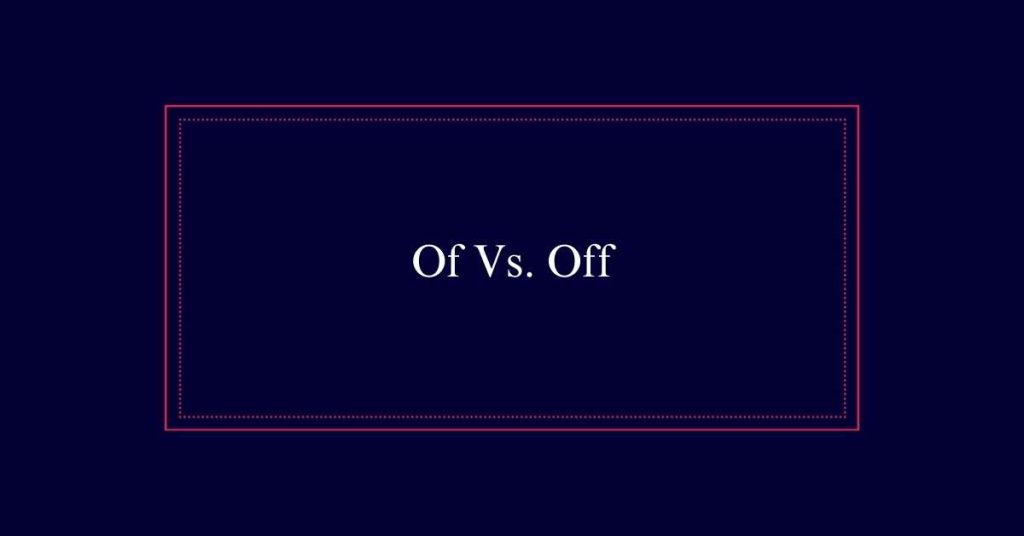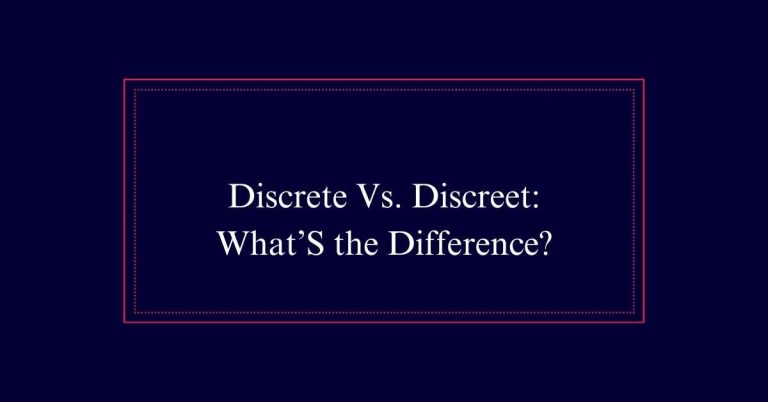Of Vs. Off
Use ‘of’ to show possession, relationships, or what something contains. For example, ‘a piece of cake’ or ‘a member of the team.’ It indicates that something belongs or relates to something else. Use ‘off’ to indicate removal, deactivation, or movement away from a place. For instance, turning off a light, taking off a coat, or walking off the stage. ‘Off’ often signifies the opposite of ‘on.’
Relation and Belonging
How do we express relationships and belonging between people or things using the word ‘of’?
The word ‘of’ connects nouns to show possession, relationships, or belonging.
For example, ‘a member of the team’ indicates membership in a group.
Similarly, ‘a piece of cake‘ shows that the piece belongs to the cake.
The phrase ‘the floor of the room’ denotes that the floor is part of the room.
In time expressions, ‘at the time of the meeting’ specifies a particular moment associated with the meeting.
Composition and Containment
The word ‘of’ is often used to indicate the composition or containment of something. For example, when you say ‘a piece of cake,’ the word ‘of’ shows that the piece is part of the cake.
Similarly, in the phrase ‘a glass of water,’ ‘of’ indicates that the glass contains water. This usage helps specify what something is made from or what it holds.
Another instance is ‘a bag of rice,’ where ‘of’ shows that the bag contains rice. Such phrases are common in everyday language and are essential for clear communication.
Opposite of ‘On’
While ‘of’ often indicates composition or containment, ‘off’ serves as the opposite of ‘on’, denoting the removal or deactivation of something.
For example, you turn off the lights when leaving a room. This indicates that the lights, which were on, are now deactivated. Similarly, when someone takes off a coat, they are removing it from their body. Off’ is used to describe the action of making something inactive or detached.
For instance, if a device is off, it is not operational or connected to a power source.

Turning Devices ‘Off’
In addition, turning devices off is essential for conserving energy and ensuring safety. When you are done using electronic devices like televisions, computers, or kitchen appliances, turning them off can help reduce electricity consumption. This not only lowers utility bills but also lessens environmental impact.
Additionally, turning devices off prevents overheating and potential fire hazards, ensuring a safer home or office environment. It is important to make this a daily habit. For instance, always switch off the stove after cooking or turn off lights when leaving a room.
In the same way, turning off devices during thunderstorms can protect them from power surges. These small actions make a big difference in both energy efficiency and safety.
Away From a Place
Moving away from a place often involves leaving behind familiar surroundings and venturing into new environments. The term ‘off’ is commonly used to indicate movement away from a location.
For example, “He was walking his dog without a leash, and the dog ran off.” This usage highlights separation from an original position. Similarly, “After walking Taylor home, Steve set off” conveys Steve leaving from Taylor’s home. Another instance is, “The Briton could only win the title if Rosberg finished off,” which implies Rosberg moving away from a particular standing.
The word ‘off’ effectively communicates the action of departing or distancing oneself from a specific point, underscoring the concept of moving away from a place.
Examples Using ‘Of’
The word ‘of’ is frequently used to show possession, belonging, or relation between different elements. It connects nouns to other nouns, creating complex ideas.
Here are some examples illustrating its use:
- Possession: ‘The book of the teacher’ shows ownership.
- Belonging: ‘The members of the club’ indicates association.
- Relation: ‘The color of the sky’ describes characteristics.
- Composition: ‘A piece of cake’ tells what something is made of.
- Containment: ‘A glass of water’ specifies contents.
Examples Using ‘Off’
Examples of ‘off’ usage can help illustrate its function in indicating separation, distance, or disconnection in a sentence. For instance, ‘The radio was on, but she needed peace and quiet so she turned it off.’ This shows disconnection by turning off the radio.
Another example, ‘He cleaned the spilled soup off the floor,’ illustrates separation as the soup is removed from the floor.
In ‘He was walking his dog without a leash, and the dog ran off,’ the word ‘off’ indicates distance as the dog moves away.
Similarly, ‘After walking Taylor home, Steve set off for his own house’ demonstrates movement away from a place.
Common Mistakes With ‘Of’
Many people mistakenly use ‘of’ when they should use ‘have’ in phrases such as ‘should of’ instead of ‘should have.’ This error often arises in speech and informal writing, where contractions like ‘should’ve’ are misheard and incorrectly transcribed. It is important to recognize this common mistake to maintain clarity and professionalism in writing.
Other frequent errors with ‘of’ include:
- Using ‘of’ instead of ‘from’ (e.g., ‘He graduated of college’ instead of ‘He graduated from college‘).
- Incorrectly placing ‘of’ in redundant phrases (e.g., ‘off of’ instead of ‘off’).
- Misusing ‘of’ in possessive structures (e.g., ‘the car of John’ instead of ‘John’s car’).
- Using ‘of’ in place of ‘about’ (e.g., ‘thinking of it’ instead of ‘thinking about it’).
- Applying ‘of’ where ‘with’ is appropriate (e.g., ‘filled of joy’ instead of ‘filled with joy’).
Common Mistakes With ‘Off’
Incorrect usage of ‘off’ often stems from misunderstanding its role in indicating separation or disconnection. People frequently confuse ‘off’ with ‘of’, leading to common mistakes. For instance, using “He fell of the chair” instead of the correct “He fell off the chair.” Below, we highlight some common errors and their corrections to clarify proper usage.
| Incorrect Usage | Correct Usage |
|---|---|
| He fell of the chair. | He fell off the chair. |
| Turn of the lights. | Turn off the lights. |
| The milk is of. | The milk is off. |
| He jumped of the bus. | He jumped off the bus. |
| The meeting is of. | The meeting is off. |
Quick Reference Guide
For a quick reference guide, understanding when to use ‘of’ versus ‘off’ can simplify your writing and guarantee accuracy. Here are some key points to remember:
- ‘Of’ is used to show possession or belonging. Example: ‘The book of John.’
- ‘Of’ indicates what something is made from. Example: ‘A cup of tea.’
- ‘Off’ is the opposite of ‘on’. Example: ‘Turn the lights off.’
- ‘Off’ indicates separation or removal. Example: ‘He fell off the bike.’
- ‘Off’ often denotes a physical or metaphorical distance. Example: ‘He walked off into the sunset.’






